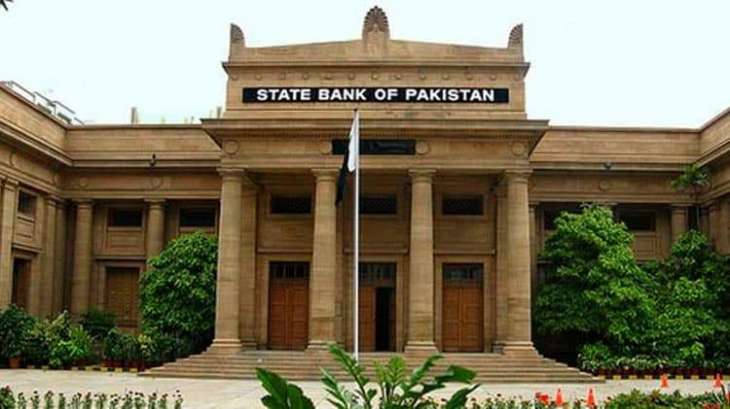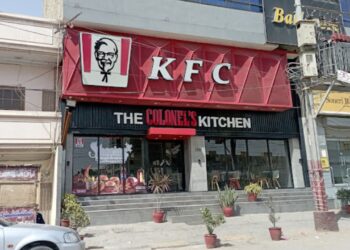The State Bank of Pakistan (SBP) has announced its monetary policy – Pakistan’s economic growth is provisionally estimated to achieve a thirteen-year high level of 5.8 percent for FY18. Concurrently, headline inflation remains moderate and is expected to stay well below the annual target of 6.0 percent.
However, since the last meeting, in MPC’s assessment the balance-of-risks to the sustainability of the healthy-growth-low-inflation nexus have shifted due to the following reasons. First, the balance- of-payments picture, despite an increase in exports and some deceleration in imports, has further deteriorated due to a sharp increase in international oil prices and limited financial inflows to date. Second, the revised estimate for fiscal deficit stands at 5.5 percent of GDP as compared to initial target of 4.1 percent for FY18, reflecting a significantly higher level of fiscal expansion than previously anticipated. These twin deficits- depicting the elevated aggregate demand in the country, are adversely affecting the near-term macroeconomic stability.
The headline CPI inflation remains moderate averaging 3.8 percent during the first ten months of FY18, mainly owing to low food inflation. Indeed, the average food inflation, clocked in 1.8 percent during Jul-Apr FY18, whereas the year-on-year food inflation was close to zero in March and April 2018. This has been possible due to adequate stocks of wheat and sugar along with smooth supply of perishables. Contrary to this, average of YoY NFNE-core inflation during the last two months has risen to 6.4 percent, which reflects the building up of inflationary pressures in the economy. A significant change in the outlook for international oil prices with its impact on upward adjustments in domestic oil prices, a strong demand, the lagged pass-through of exchange rate adjustments, food inflation maintaining its current course and the stoking of survey-based measures of inflationary expectations will largely determine the inflation path in the remaining period of FY18 and for FY19. Conditional upon these developments, the average inflation for FY18 is projected to remain within SBP’s model-based range of 3.5-4.5 percent whereas the average FY19 inflation is estimated to be marginally above the annual target of 6 percent.
Turning to the supply side, the real sector has posted a broad-based healthy growth in FY18. Helped by strong growth in major crops and a modest increase in livestock, agriculture sector has not only recorded a notable improvement over the last year but also surpassed the annual growth target of 3.5 percent. Meanwhile, industrial sector grew by 5.8 percent, primarily because of vibrant construction activity and notable improvement in large-scale manufacturing. These gains in the commodity-producing sector along with growing aggregate demand have pushed the growth in services to 6.4 percent. Keeping in view this strong growth momentum and the upcoming investments in auto and construction allied industries, the government has set the real GDP growth target of 6.2 percent for FY19. However, SBP’s assessment of overall macroeconomic picture suggests that this target is ambitious and would critically depend on managing the growing pressures on the external account -discussed below, while ensuring that average inflation is contained close to its target in FY19.
Broad money supply saw a net expansion of only 4.9 percent during 1st Jul to 18th May FY18 as compared to 7.3 percent during the same period last year. The monetary expansion in FY18 is entirely driven by government borrowing for budgetary support and the continuation of well diversified healthy growth in credit to the private sector. The private businesses borrowed Rs. 482
billion for both the working capital and fixed investments during Jul-Apr FY18. Meanwhile, consumer financing also saw a net expansion of Rs. 69 billion, which contributes to higher demand of industrial products, especially of automobiles and consumer durables. Barring the aforementioned risks associated with growth and recovering commodity prices, these trends are likely to persist in the coming months of FY19 as the private sector continues to adjust its funding needs in line with the requirements of the growing economy, especially related to CPEC investments. However, the expansionary impact of net domestic assets on the broad money supply was partially offset by net contraction in foreign assets of the banking sector in FY18 so far. Specifically, NFA of the banking sector saw a net contraction of Rs 600 billion during 1st Jul to 18th May FY18, capturing the monetary impact of external sector developments.
On the external front, the current account deficit widened to US$ 14.0 billion during the first ten months of FY18, which is 1.5 times the level of deficit realized during the same period last year. Despite a strong recovery in exports (YoY increase of 13.3 percent during Jul-Apr FY18) and a moderate increase in workers’ remittances (YoY growth of 3.9 percent), the growing imports to support higher economic activity and the sharp increase in oil prices have pushed the current account deficit to a higher level. In the absence of sufficient projected financial flows, a portion of this higher current account deficit was managed by using country’s own resources during FY18. Consequently, SBP’s liquid FX reserves saw a net reduction of US$ 5.8 billion to reach US$ 10.3 billion as of 18th May 2018. Reflecting the increasing pressures in the external sector, PKR has depreciated by 9.3 percent against the USD up till 24th May 2018. The near-term sustainability of prevailing higher current account deficit critically depends on the realization and further mobilization of financial flows. The need for deep rooted structural reforms to improve the country’s competitiveness can hardly be over emphasized for medium to long term sustainability of balance of payments.
In the light of the above discussions and developments, the Monetary Policy Committee has decided to increase the policy rate by 50bps to 6.50 percent effective from Monday 28th May 2018.
















